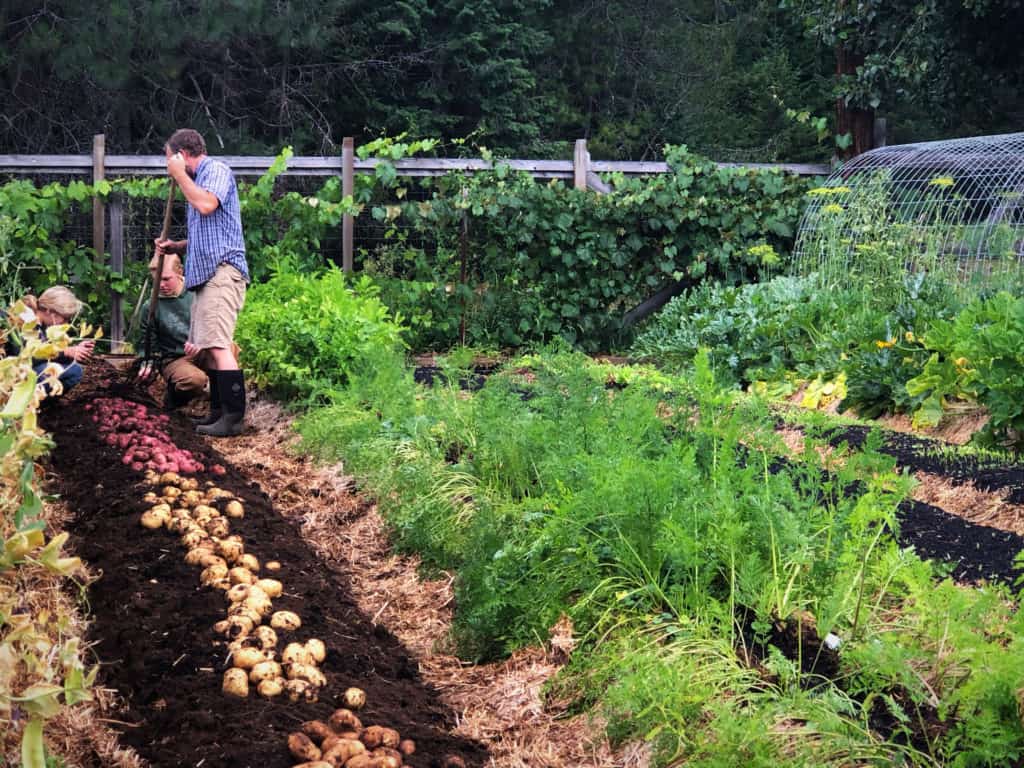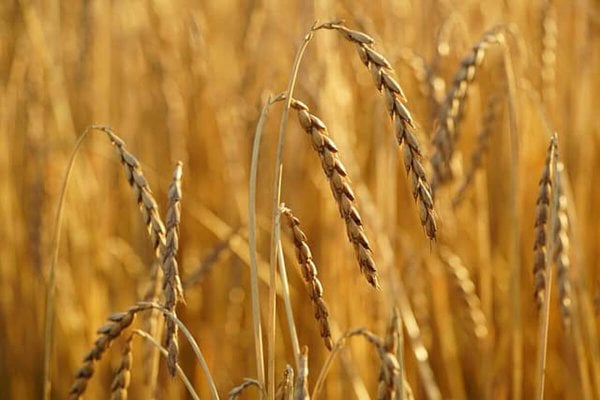Many people wonder whether they should till or no-till their garden. The answer might be different depending on your circumstances. Find out when no tilling is best, and how to follow the traditional no-till gardening method.

To Till or Not To Till
Our general philosophy is a no till garden method. In fact, check out how we turned our sod into a cottage garden using the lasagna method (this was actually a sped-up “quick method” of layer gardening).
Keep in mind, however, that at different times there are different circumstances which may require some tilling. (The video below will show you one such reason – start watching at about 9 minutes in.)
As always, before starting a garden (or even before starting your seeds indoors) we recommend reading the 10 most common gardening mistakes people make.
When we bought our property, the garden area had been neglected for many years, covered with plastic, completely compacting the soil. When I dropped a large shovel into the ground from a foot or so above the garden soil, it only stuck into the ground a couple of inches.
However, after tilling up the soil, that same shovel dropped at the same height, went into the soil (easily) 6-8 inches.
Having soil that’s nice and loose is going to yield a better crop because the root system will have an easier time working their way through the soil, giving the plant proper strength and structure.
Methods of No Till Gardening
Most gardening methods are either based around tilling or non-tilling methods.
- Lasagna Gardening
- Back to Eden Gardening
- Double Dig
- Bio Intensive Gardening
We’re frequently asked, “What do you do?” Over the years we’ve dabbled in each of those and, in fact, we still do each of these in some form on the homestead.

Building and Improving Soil
Ultimately, we don’t believe it matters so much what TYPE of method you use, but more importantly, we need to build up and improve our soil.
We need to cultivate a healthy biology (or the soil food web) within our soil. That’s what will give us a good harvest and what will produce healthy, nutrient-dense food.
Different Methods Work At Different Times
I generally prefer no till. I practice permaculture which tries to mimic nature. God knew what he was doing when He set up natural systems.
Natural systems build soil, so most of the no-till methods are an attempt to mimic nature in a way that’s useful for us, that we can manage and improve productivity.
However, you need to look, first and foremost, at your situation. There are times when we need to create “disturbance” to get things going.
The perfect example is our garden when we first bought our homestead. It had been neglected for years and packed down. Because we wanted the garden to be useable for the upcoming growing season, we didn’t want to wait a couple of years to implement something like the Back To Eden garden method.
Ideally, using layers of mulch, wood clippings and adding in organic matter and compost would produce beneficial organisms that would naturally loosen up our soil and make it ready to plant.
But we didn’t want to wait a couple of years this would take before planting a garden, so we sped it up in this instance by tilling and adding in these organic materials all at once.

Benefits of No Till Gardening
No till gardening is fantastic for so many reasons, a few of which are:
- Yields a nice, high quality, thick layer of mineral rich healthy soil.
- Reduces weeds in your garden bed over time because it eliminates (or drastically reduces) the germination of weed seeds.
- Saves time year after year.
- No need to plant cover crops
- A great method for vegetable gardens.
- Utilizes organic materials you may already have on hand such as grass clippings, wood chips, compost and fall leaves.
Transitioning To A No Till Garden
Don’t feel as though you need to adjust to one method of gardening all at once. As I mention in the video, this year we’re tilling up our garden creating rows that won’t be tilled year after year.
Adding Compost
I’m laying out the garden plan, adding in compost (up to 4 inches or so) and adjusting as needed. We make our own compost, and teach how you can too in How to Make Compost the Easy Way – Composting 101.
Some rows of my garden will get less compost in order for other areas to get more. Know what your crops like, if they’re crops that prefer a more nitrogen rich soil, you can go a little light on the compost this year.
Adding Mulch
Once the rows have been composted we’ll add a nice layer of mulch to protect the soil. Mulch isn’t going to immediately bring many nutrients to your soil. Its main purpose is protection.
Ideally, you’ll want different sizes of mulch, and you can very easily make mulch yourself (as you’ll see in the video below).
Preparing Your Garden For Winter Using No Till Methods
Read these posts for more information on preparing your garden for winter utilizing these no-till gardening (or lasagna gardening) techniques and create an instant garden in under three hours.
- Finish your harvest
- Remove all plant material
- Add amendments
- Cover the soil
Finish Your Harvest
There’s no need to do anything until you’ve completed your harvest. Keep growing your garden all the way up until that first frost date and enjoy the fruits of your labor.
Remove Plant Material
You don’t want to let your unharvested crops decompose on top of your soil. Instead, you’ll want to remove the plant material by cutting down the plant at the roots. DO NOT pull up the roots!
Leaving the roots in the ground allows them to break down in the soil and feed that soil food web. They’ll add carbon and organic matter to your soil that you could never reach with a tiller.
Then, take the matter you have cut off and run it through the chipper or shredder (or add it to your compost pile) and that will feed your garden next spring.
Amend Your Soil
Adding amendments to your soil in the fall, or post harvest, seems backward. It may not be necessary to do so, however if your organic matter and organic life is low, you’ll likely need to continue building this ecosystem up.
To do so, you can reshape your rows (if they’ve gotten a little messed up during harvest), pull back any remaining mulch and add in your organic compost (about 2-3 inches if possible).

Mulch and Cover Your Soil
After you’ve added in your organic compost, you’ll want to cover your beds with a blanket. Get them all nice and tucked in for winter.
Mulching your garden not only protects the soil from eroding away during the heavy fall and winter rains/snow, but it also helps protect the ecosystem developing below the surface.
Mulching your garden also helps keep the weed seeds from getting stirred up and, over time, reduces the number of weeds in your garden. It also helps get rid of grass in the garden.
No Till Garden Conclusion
Whether you can start your no-till garden off perfectly, or you set a goal to work toward a great system over a few years’ time, we can all agree that improving your soil, little by little as you’re able is the best course of action.
Your harvest will benefit, your crops will be more nutrient-dense and, in turn, your health will improve by consuming crops that are healthier than their store-bought counterparts.
Read more of our Spring Garden Planning Ideas, Tips & Tricks and Late Start Gardening Tips here!


















